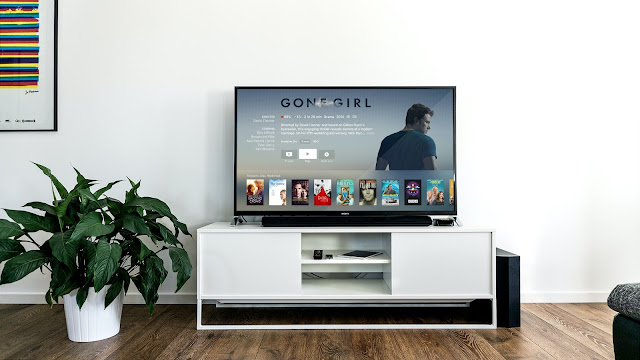If you want to have a TV on a wall where there isn't an electrical outlet socket, there is an easy and cheap solution and it doesn't involve an electrician.
 |
| Photo by Jens Kreuter |
And it only costs around £30.
For ages I just had a small television stuck in an alcove at the side of the fireplace but I could see the perfect place to house a TV (and a bigger TV) was on a wall opposite the fire place where it could be clearly seen from two sofas. Unfortunately that wall didn't have a single electrical outlet anywhere near it and was miles from where the aerial cable came in (I've since ditched the satellite dish with it's aerial, here's that how to blog post).
Knowing that to get power put into a wall where there isn't any is always a bigger job than you think, I thought I'd try and find an easy and low budget solution.
It turned out to be so simple that I can't believe I didn't do it before.
Truly brilliant self sticking, curved top trunking that hinges open to let you hide cables inside.
It sit's just above the skirting boards and door frame and with it's rounded top, it blends in.
Once you have installed it, you wont notice it.
It can be sanded and painted to blend in. My skirting boards and door frame are white so I left it in it's natural state, and just painted the last part that goes up the wall from the skirting board to the TV.
That's all you need.
No more television rammed in to an awkward space.
Here's the more detailed how to.
1 - Look at your skirting boards and door frames and follow the shortest route from your power supply, sky box/aerial etc to where you want your television to be and measure that route.
2 - Buy an electrical extension cable to that length with I'd say a minimum of three sockets (gangs).
2 - If you are using an aerial, buy an aerial cable extension to that length.
3 - Measure the width of the cables you are using so you know which size trunking you need to fit these in. If you only need the electrical extension lead, that looks best as the trunking is so small.
4 - Measure the straight edges the trunking will have to go along and look at the corners, make a note of how many left and right corners etc you need. It usually works out cheapest to buy a D-Line kit with various parts but you can buy extra pieces if you need them.
5 - Cut the lengths to size, it's easy to cut with a small hack saw, and stick them to the wall.
6 - Attach the corner pieces.
7 - Put your cables inside and your good to go.
Here are the links to the different sized D-line packs.
 |
| Before the trunking was painted. (I hung the TV on the wall, sure it's going no where but books and DVD's for support). |
The TV electrical cable goes down the wall inside the trunking, there is a gap between that trunking and the trunking that goes along the skirting board, this is where the extension socket and plug join. Mine sits inside a little basket under the radiator cover.
You can buy the D-line trunking from many places such as Screwfix and Amazon, if you buy from the Amazon link above I receive a 3% commission.


No comments
Post a Comment